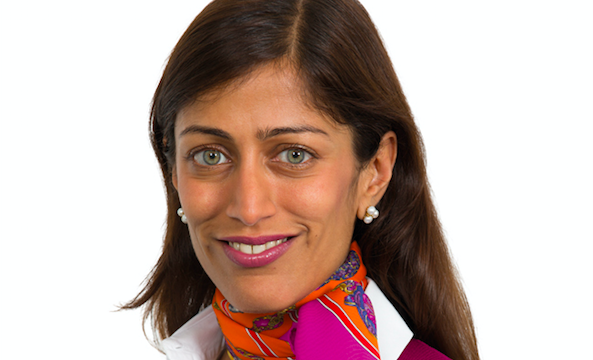Maya Bhandari, portfolio manager
FSA: What’s driving investor appetite for multi-asset income products?
Bhandari: In an investment environment where yields across many asset classes are close to historical lows, but where there are risks aplenty on the horizon, investors face a challenge to find a robust income stream. Yet the importance of investing for income has not diminished; if anything, global demographic developments have raised its appeal.
While equities provide strong long-term returns, they are volatile and drawdowns of 40%-plus are not uncommon. Further, these drawdowns have been well-correlated to the economic lives of individuals and companies, so are poorly suited to precautionary – or rainy-day – savings.
Meanwhile, in core government bonds, although yields might be low for good reason, a 40-year bull market has left valuations looking full, return prospects low and income potential marginal.
Against this backdrop, investors are seeking other ways to achieve a strong level of income, without enduring the volatility associated with equities or lower-rated corporate bonds. Many have found this in dynamically-managed multi-asset funds.
With a focus on diversification, such funds enable investors to participate in income opportunities as they present themselves, but also to protect their capital when threats appear on the horizon. This can provide attractive levels of income irrespective of the global macro-economic environment.
FSA: How should investors view the role of multi-asset income funds within their overall portfolio amid different investment landscapes?
Bhandari: In the past, investors have found a mix of strong returns and income, with a control on volatility, in relatively static mixes of equities and long-dated government bonds.
However, we believe such an approach, which relies on historic assumptions of correlation, will be less fruitful in today’s investment landscape and going forward.
For example, bond returns are, over the medium-term, a function of their starting yield and yield changes; with government bond yields today close to all-time lows and likely to rise as central banks tighten, risk/reward looks particularly poor. We can, therefore, no longer rely on a static asset allocation strategy to meet income targets in a sustainable, volatility-controlled way.
Instead, by dynamically allocating between and within asset classes to minimise drawdowns and participate in income and growth opportunities, we believe multi-asset funds are well-placed to deliver a sustainable and volatility-controlled income stream in client portfolios.
FSA: How can investors manage volatility and various investment risks via a multi-asset income approach?
Bhandari: The Threadneedle (Lux) Global Multi Asset Income (GMAI) Fund seeks to deliver attractive levels of income (5%) whilst aiming to preserve and grow capital, with less volatility than an equity-only portfolio. The Fund is designed to both benefit from, and effectively manage, investment risks, depending on the market environment.
The Fund seeks to capture attractive risk premia by combining high-yielding equities with (often uncorrelated) fixed income assets. This serves to reduce overall portfolio volatility (which has been roughly half that of the MSCI ACWI index since its inception).
As a result, the portfolio should be more robust against a multitude of economic scenarios than any single-asset class portfolio, and so should enhance the overall return per unit of risk taken.
Importantly, GMAI can also directly benefit from market volatility, through systematically selling out-the-money equity index call options, one of three diversified sources of income employed by the Fund (they are: equities, fixed income and covered calls). As implied volatility rises, the premiums received from selling the call options increase, contributing to our overall income target. The strategy is essentially short equity volatility, and the premium we receive can serve as a protective cushion in periods of market weakness.
Elsewhere in the portfolio, we seek to identify and exploit mispriced market risks to gain exposure to assets we like at attractive valuations. A recent example of this arose from markets buffeted by the crisis in Turkey; as contagion impacted certain better-supported emerging markets, we added to both our South African local government bond and Mexican hard currency bond positions, as yields backed up to levels at which we had initiated the positions.
FSA: Given the large number of multi-asset funds available, how is the CTI strategy different?
Bhandari: We feel our differentiators lie in the following four areas:
- Diversified sources of income – we seek income for the GMAI Fund from three diversified sources: equities, fixed income and a covered call strategy. We can flex our asset allocation to take advantage of these opportunities depending on our outlook. Since the inception of the Fund in November 2014, each source of income has contributed broadly equally; yet each has delivered at different times to one another.
- Focus on a sustainable income – we do not seek ‘headline grabbing’ distributions; rather, we have a strong focus on the sustainability of income. That is why we have historically never paid out income from the Fund’s capital account and we cap distributions at 6%, investing anything else back into the Fund as a way to help preserve and grow our clients’ capital. We also have a strong focus on quality in the underlying companies we invest in; our company analysts do not seek income at any cost, rather look for companies well-placed to serve their debt or to pay and grow their dividends over time.
- Volatility control – the third pillar of the Fund is its inherent focus on volatility control. Avoiding the sorts of drawdowns associated with equity markets is crucial to maintain a reliable and sustainable income stream for our clients. Since its inception, the Fund has exceeded its income target each year whilst growing our clients’ capital, but with around half the volatility of global equities.
- Global reach – The Fund benefits from Columbia Threadneedle’s best income ideas from a truly global opportunity set. The robust and repeatable process that drives this Fund has been in place for 24 years; it brings together investment professionals from across our global platform, both company analysts and asset allocators.
FSA: What’s your asset allocation strategy for the next 6-12 months?
Bhandari: Looking forward, we remain positive on the outlook for the broad global macro-economic environment, with decent growth and only gentle rises in inflation coming through in many regions. This reflationary environment is supporting strong earnings delivery and we don’t think equity valuations look too onerous as these earnings and earnings expectations have held up and as recent volatility has uncovered greater risk premia.
As of September 30, our 55% equity allocation in the Threadneedle (Lux) GMAI Fund, therefore, is close the upper bound of its 40% to 60% range. Fixed income, on the other hand, especially long duration, continues to look vulnerable to us as the 40-year bull run draws to a close and central banks call time on a decade of ultra-loose policy; therefore, we are lightly positioned in such assets (overall fund duration is 1.8 years).
Whilst we have a defensive view on long-duration fixed income, we are more positive on corporate credit, and European high yield in particular. The broader European high yield market is relatively good quality, with low associated duration and supported by accommodative central bank policy – characteristics we like in this environment.
We think the yield on offer compensates us well for the underlying (low) default risk; moreover, spreads in Europe are trading outside the US high yield market for the first time since 2013, despite the US being later in the cycle, with defaults creeping higher and a more hawkish central bank.
Reflecting these developments, our most recent asset allocation change (as of September 30) was to exit US high yield altogether, instead increasing our exposure to European high yield to 35%. We are also finding attractive risk premia on offer in some parts of emerging markets fixed income.
Given the Fund’s income objective, our allocations are concentrated in high-yielding equities and fixed income. Yet there is a strong focus on quality throughout the portfolio, as we seek to control portfolio volatility and preserve our clients’ capital. Therefore, in equities, we are invested in companies that not only pay a strong dividend, but that are growing both earnings and dividends, that use limited leverage and whose dividend cover is robust. In fixed income, too, we are positioned in better-quality high-yielding companies with particular attention to downside risk management.
Notwithstanding our preference for equities, there are various risks on the horizon that are shaping the way we are investing in GMAI. Markets have been buffeted by the prospect of escalating global trade wars, emerging markets currency weakness and systemic risks in European banks, not to mention the crisis in Turkey.
Amid all these factors, we have taken advantage of jittery markets to take exposure to the assets we like at more attractive valuations, like South African local and Mexican hard currency government bonds.
Important Information:
For internal use and for Professional and/or Qualified Investors only.
This material in this publication is for information only and does not constitute an offer or solicitation of an order to buy or sell any securities or other financial instruments to anyone in any jurisdiction in which such offer is not authorised, or to provide investment advice or services. Investors are advised to read and understand the contents of the Prospectus before investing. This publication has been prepared without taking into account the objectives, financial situation or needs of any particular person. Before making an investment decision to hold or continue to hold units in the fund you should consider, with the assistance of a financial or other professional adviser, whether the investment is appropriate in light of those circumstances. In the event an investor chooses not to seek advice from a financial adviser, the investor should consider whether the fund is suitable for him.
Past performance of the fund and its manager and any forecasts or information on the economic trends are not necessarily indicative of the future or likely performance of the fund or its manager or a guarantee of future trends. The value of investments and any income is not guaranteed and can go down as well as up and may be affected by exchange rate fluctuations. This means that an investor may not get back the amount invested.
The fund may invest in financial derivative instruments to the extent permitted under relevant laws. As such, it may experience greater volatility in its net asset value. Further details are available in the Prospectus.
The research and analysis included in this document has been produced by Columbia Threadneedle Investments for its own investment management activities, may have been acted upon prior to publication and is made available here incidentally. Any opinions expressed are made as at the date of publication but are subject to change without notice and should not be seen as investment advice. Information obtained from external sources is believed to be reliable but its accuracy or completeness cannot be guaranteed.
This document includes forward looking statements, including projections of future economic and financial conditions. None of Columbia Threadneedle Investments, its directors, officers or employees make any representation, warranty, guaranty, or other assurance that any of these forward looking statements will prove to be accurate. The mention of any specific shares or bonds should not be taken as a recommendation to deal.
This document and its contents are proprietary. It may not be reproduced in any form or passed on to any third party without the express written permission of Columbia Threadneedle Investments.
Threadneedle (Lux) is an investment company with variable capital (Société d’investissement à capital variable, or “SICAV”) formed under the laws of the Grand Duchy of Luxembourg. The SICAV issues, redeems and exchanges shares of different classes, which are listed on the Luxembourg Stock Exchange. The management company of the SICAV is Threadneedle Management Luxembourg S.A, who is advised by Threadneedle Asset Management Ltd. and/or selected sub-advisors. For Hong Kong: Threadneedle Management Luxembourg S.A. has appointed HSBC Institutional Trust Services (Asia) Limited as its Hong Kong Representative. For Singapore: The SICAV has appointed State Street Bank and Trust Company, Singapore Branch as its Singapore representative and agent for service of process in Singapore.
Subscriptions to a fund may only be made on the basis of the Offering Documents as well as the latest annual or interim reports and the applicable terms & conditions. Please refer to the ‘Risk Factors’ section of the Prospectus for all risks applicable to investing in any fund and specifically this fund. The above documents can be obtained free of charge on request from any appointed distributors or our website at www.columbiathreadneedle.com
Issued by Threadneedle Portfolio Services Hong Kong Limited 天利投資管理香港有限公司. Unit 3004, Two Exchange Square, 8 Connaught Place, Hong Kong, which is licensed by the Securities and Futures Commission (“SFC”) to conduct Type 1 regulated activities (CE:AQA779). Registered in Hong Kong under the Companies Ordinance (Chapter 622), No. 1173058. Any fund mentioned in this document is authorised by the SFC. SFC authorisation is not a recommendation or endorsement of a scheme nor does it guarantee the commercial merits of a scheme or its performance. It does not mean the scheme is suitable for all investors nor is it an endorsement of its suitability for any particular investor or class of investors. The contents of this document have not been reviewed by any regulatory authority in Hong Kong.
Issued by Threadneedle Investments Singapore (Pte.) Limited, 3 Killiney Road, #07-07, Winsland House 1, Singapore 239519. Regulated in Singapore by the Monetary Authority of Singapore(“MAS”) under the Securities and Futures Act (Chapter 289) (“SFA”). Registration number: 201101559W. This document is not a prospectus as defined in the SFA. Accordingly, statutory liability under the SFA in relation to the content of prospectuses would not apply.
Columbia Threadneedle Investments is the global brand name of the Columbia and Threadneedle group of companies.

















